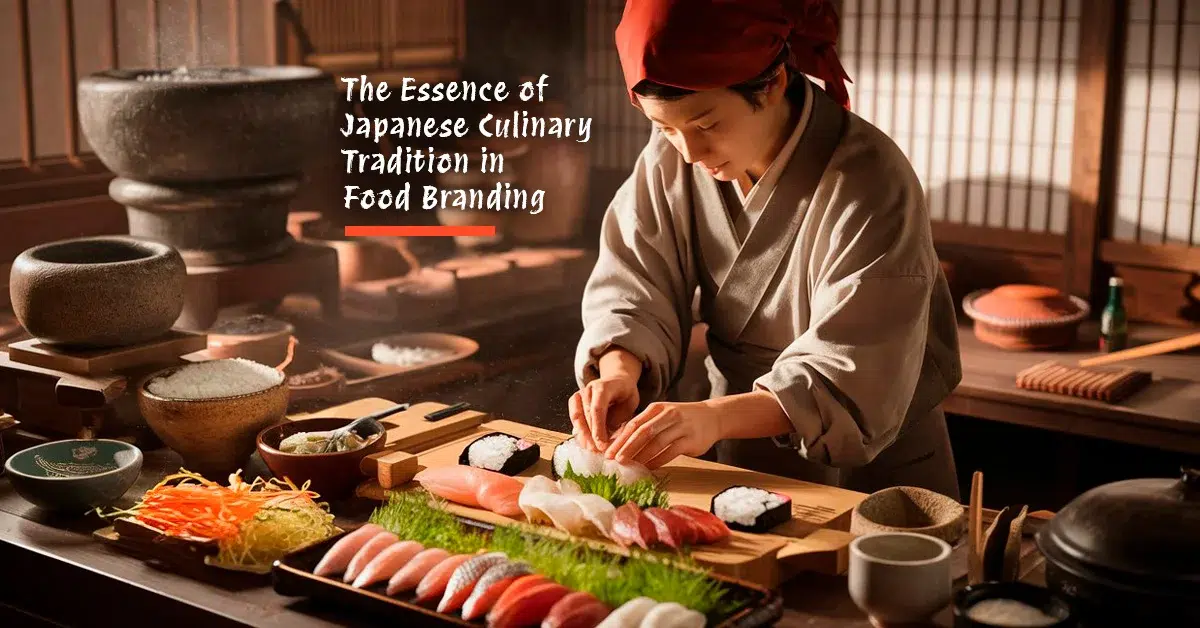
In the realm of culinary artistry, Japanese cuisine stands as a beacon of tradition and innovation. The meticulous preparation and cultural significance of dishes like sushi and ramen showcase the essence of Japanese culinary excellence. When it comes to culinary branding, Japan intertwines flavours with stories, creating a unique dining experience that captivates taste buds worldwide. This blog post delves into the heart of Japanese gastronomy, exploring how branding plays a vital role in preserving and evolving this rich culinary heritage.
Historical Roots of Japanese Cuisine
Ancient Influences
Introduction of rice cultivation
In the annals of Japanese culinary history, the cultivation of rice emerges as a pivotal moment. Fields transformed into golden seas of grains, shaping not just sustenance but a way of life.
Influence of Buddhism on vegetarian dishes
Buddhism’s gentle whispers echoed through Japanese kitchens, inspiring a harmony between nature and nourishment. Vegetarian dishes bloomed like lotus flowers, embodying simplicity and reverence.
Evolution Through the Ages
Edo period culinary advancements
The Edo era dawned with culinary artisans mastering their craft. From intricate knife skills to delicate flavours, each dish became a canvas of tradition painted with innovation.
Modernization and Western influences
As Japan opened its doors to the world, a culinary exchange unfolded. Traditional flavours danced with foreign spices, creating a symphony of tastes that resonated across borders.
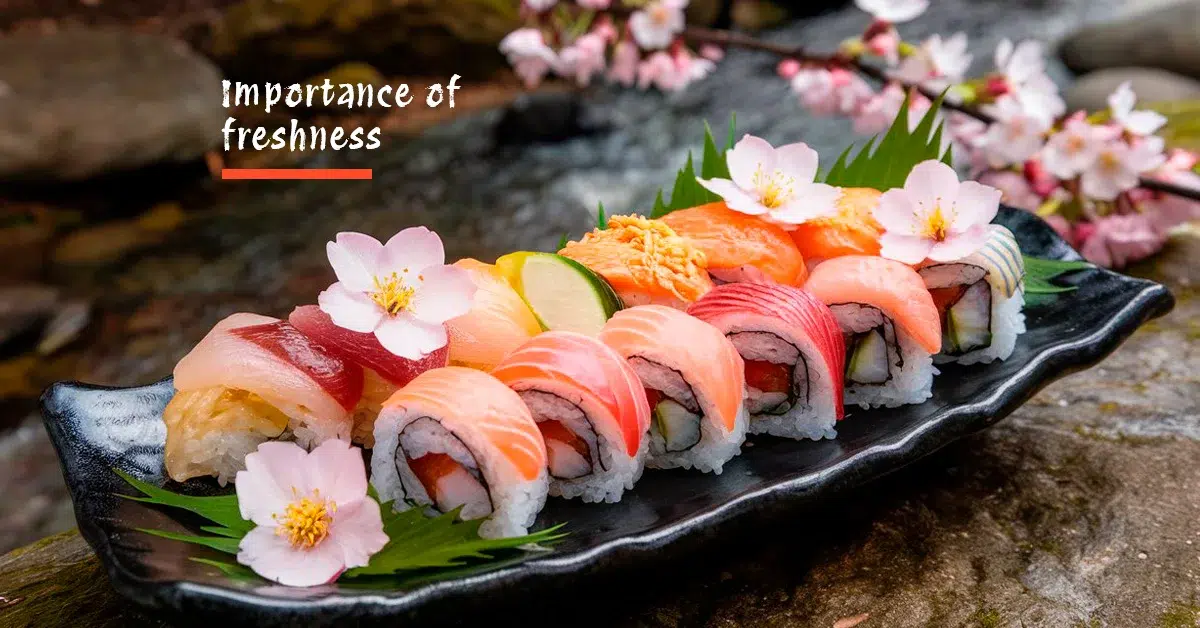
Core Elements of Japanese Culinary Tradition
Seasonal Ingredients
Importance of freshness
In the realm of Japanese culinary tradition, freshness reigns supreme. Ingredients are not merely components of a dish; they are storytellers of the season, whispering tales of sun-kissed mornings and dew-kissed evenings. Each vegetable, each fish, each grain is a symphony of flavours waiting to be orchestrated into a culinary masterpiece.
Examples of seasonal dishes
In the world of Japanese gastronomy, seasonal dishes are more than just food – they are fleeting moments captured on plates. From the delicate sakura-inspired creations of spring to the hearty root vegetable stews of winter, each dish reflects nature’s ever-changing canvas. The vibrant hues and textures mirror the kaleidoscope of Japan’s landscapes, inviting diners on a sensory journey through the seasons.
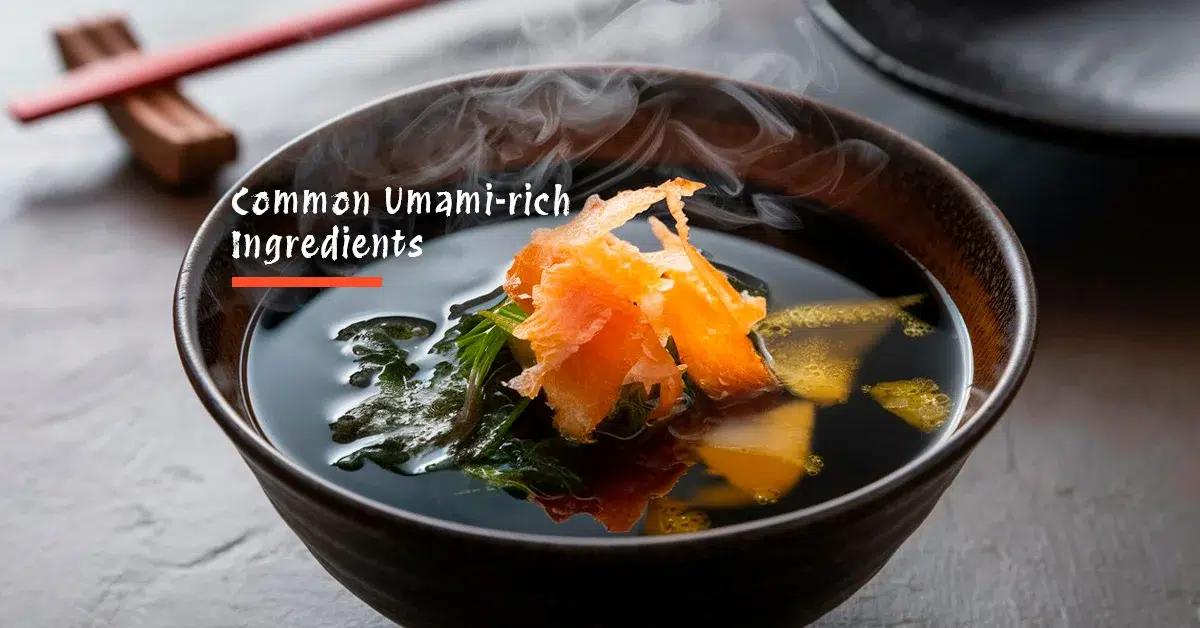
The Role of Umami in Japanese Cuisine
Definition and Importance
In the realm of Japanese cuisine, umami reigns as a flavour powerhouse, elevating dishes to new heights. The quest for this savoury essence led to a culinary revelation that transformed taste buds worldwide.
Discovery of umami
Centuries ago, Japanese chefs embarked on a flavorful journey, unravelling the secrets of umami hidden within ingredients. Their pursuit unveiled a fifth taste sensation that added depth and richness to every bite.
Common umami-rich ingredients
From the ocean’s embrace emerged treasures like kombu and bonito flakes, infusing broths with an unmatched savoury allure. Soy sauce and shiitake mushrooms lent their distinct umami notes, creating symphonies of flavour in every dish.
Umami in Branding
The art of culinary branding embraces umami as a storytelling tool, weaving narratives through taste. Brands leverage this savoury magic to carve identities that linger on palates long after the last bite.
How umami enhances brand identity
Like an artist’s brush on a canvas, umami paints brands with depth and complexity. It transforms dining experiences into memorable journeys, imprinting flavours on hearts and minds alike.
Case studies of successful brands
SavorEats, a renowned sushi chain, masterfully integrates umami into its menu, crafting signature rolls that captivate diners. Through meticulous ingredient selection and flavour balance, SavorEats has carved a niche in the culinary world as a beacon of umami excellence.

Traditional Japanese Dining Etiquette
Table Manners
Skillful hands hover over lacquered chopsticks, poised for a culinary dance. The click-clack symphony of chopstick etiquette echoes through the air, a prelude to the gastronomic opera about to unfold.
Eyes meet in silent agreement, acknowledging the unspoken rules of dining. Each movement is deliberate, each gesture a tribute to tradition. The art of using chopsticks transcends mere utensil handling; it is a cultural rite passed down through generations.
Cultural Significance
In the realm of Japanese dining, respect and humility are not just virtues but guiding principles. Every meal is a tapestry woven with threads of honour and gratitude, each dish a token of appreciation for nature’s bounty.
Rituals and ceremonies punctuate the dining experience, transforming meals into sacred moments. From the graceful exchange of sake cups to the intricate tea ceremonies, each ritual carries the weight of centuries-old customs. In this theatre of flavours, every bite is an ode to tradition, every sip a communion with history.
Iconic Japanese Dishes and Their Food Branding
Sushi
History and evolution
Sushi, a culinary marvel that transcends time, traces its origins to humble beginnings. Fishermen in ancient Japan devised a way to preserve fish by fermenting it with rice, birthing the precursor of modern sushi. Over centuries, this preservation method evolved into the artful delicacy known today.
Branding of sushi restaurants
In the bustling streets of Australia and beyond, SushiSushi emerges as a beacon of culinary excellence. With a blend of tradition and innovation, SushiSushi crafts an experience where each roll tells a tale of seas crossed and flavours harmonised. The brand’s commitment to freshness and authenticity resonates with diners worldwide.
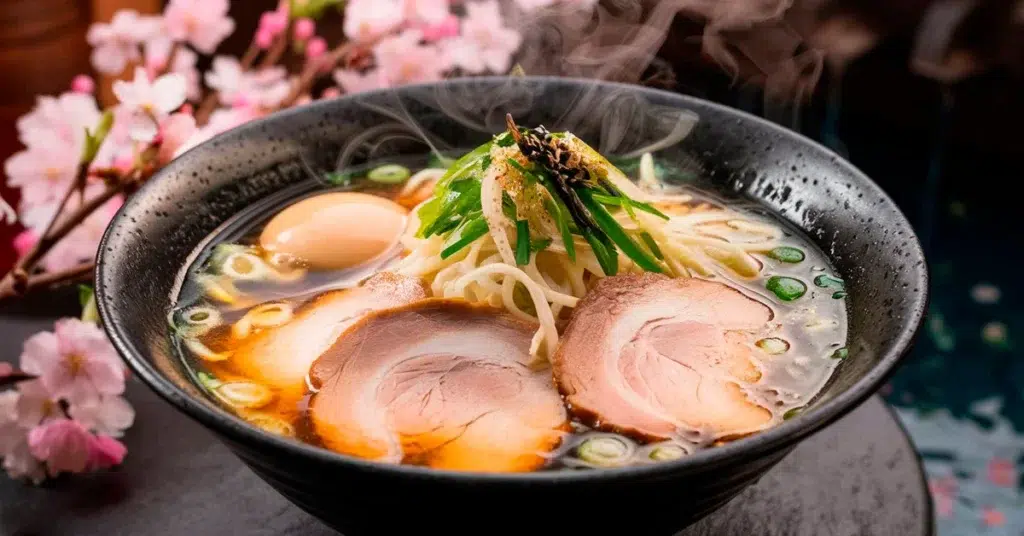
Ramen
Regional variations
Ramen, a steaming bowl of comfort, weaves a tapestry of regional flavours across Japan. From the savoury miso broth of Hokkaido to the fiery tonkotsu of Kyushu, each region boasts its signature style. Ramen shops stand as cultural ambassadors, showcasing not just noodles but stories steeped in tradition.
Branding strategies of ramen shops
Amidst the steam-filled kitchens and clattering bowls, RamenLegends shines as a luminary in the realm of ramen branding. By infusing creativity into each bowl and honouring ancestral recipes, RamenLegends captures hearts with each slurp. The brand’s dedication to quality and innovation sets it apart in a sea of noodle offerings.
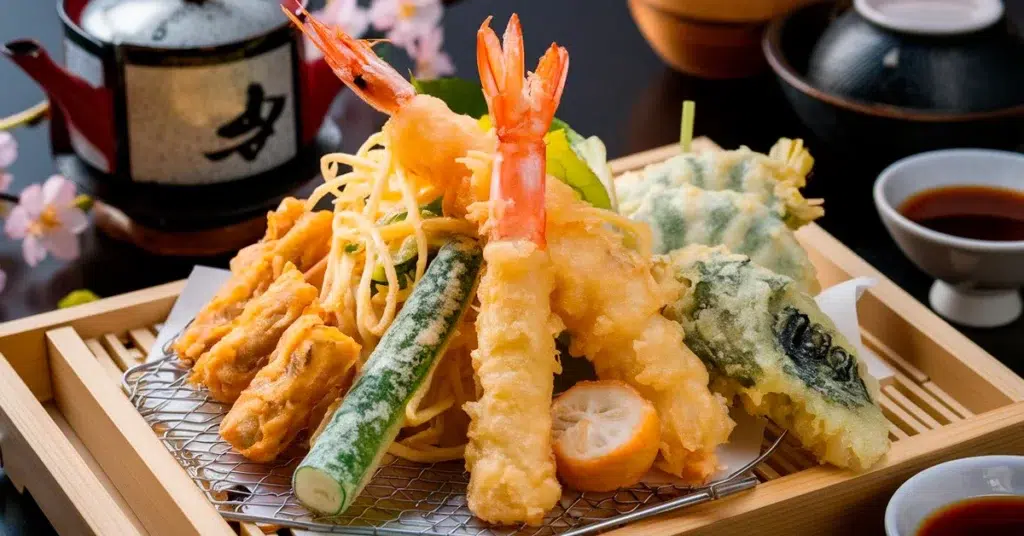
Tempura
Origins and preparation
Tempura dances between sizzling oil and golden perfection, embodying a culinary alchemy born in Nagasaki centuries ago. Portuguese missionaries introduced this frying technique to Japan, leading to the creation of light, crispy tempura that graces tables today.
Branding and market positioning
TempuraTales, an ode to crunchy delights, elevates tempura from mere dish to gastronomic art form. Through meticulous sourcing of ingredients and precise frying techniques, TempuraTales has carved a niche in the market as purveyors of golden-brown perfection. Each bite is a symphony of crunch and flavour that lingers on palates long after the meal ends.

Influence of Japanese Culinary Tradition on a Popular Global Cuisine
International Popularity
Sushi and sashimi
Japanese culinary tradition has transcended borders, captivating palates worldwide with its iconic dishes. Sushi, a symphony of flavours and textures, has become a global sensation. The delicate dance of fresh fish atop seasoned rice tells a tale of seas crossed and culinary harmony achieved.
Sashimi, the art of simplicity in its purest form, showcases the essence of Japanese gastronomy. Thin slices of raw fish, expertly prepared and served with minimal adornments, embody the Japanese philosophy of letting ingredients speak for themselves. Each bite is a celebration of purity and precision that resonates across continents.
Japanese fusion cuisine
In the realm of culinary innovation, Japanese fusion cuisine emerges as a vibrant tapestry woven from tradition and creativity. The marriage of Japanese flavours with global influences gives rise to dishes that transcend cultural boundaries.
From sushi burritos that blend East and West in a flavorful embrace to matcha-infused desserts that tantalise taste buds with their unique sweetness, Japanese fusion cuisine sparks joy in every bite. It’s a testament to the adaptability and ingenuity of Japanese culinary tradition, inviting diners on a journey of unexpected delights.
Adaptation in different markets
As Japanese cuisine travels across oceans and continents, it undergoes fascinating transformations to suit diverse palates. In each new market it enters, Japanese culinary tradition adapts while retaining its core essence.
Whether it’s sushi rolls infused with local ingredients or ramen bowls tailored to regional tastes, the evolution of Japanese cuisine reflects a harmonious blend of tradition and innovation. By embracing local flavours and culinary customs, Japanese brands create experiences that resonate with diners around the globe.
Case studies of global brands
Global brands rooted in Japanese culinary tradition serve as beacons of cross-cultural branding success. Through thoughtful adaptation and innovative storytelling, these brands bridge culinary divides and foster appreciation for Japan’s rich gastronomic heritage.
TokyoTaste, known for its inventive sushi creations tailored to Western palates, exemplifies how cultural fusion can lead to culinary triumphs. By blending traditional techniques with contemporary twists, TokyoTaste has carved a niche in international markets as a purveyor of bold flavours and creative flair.
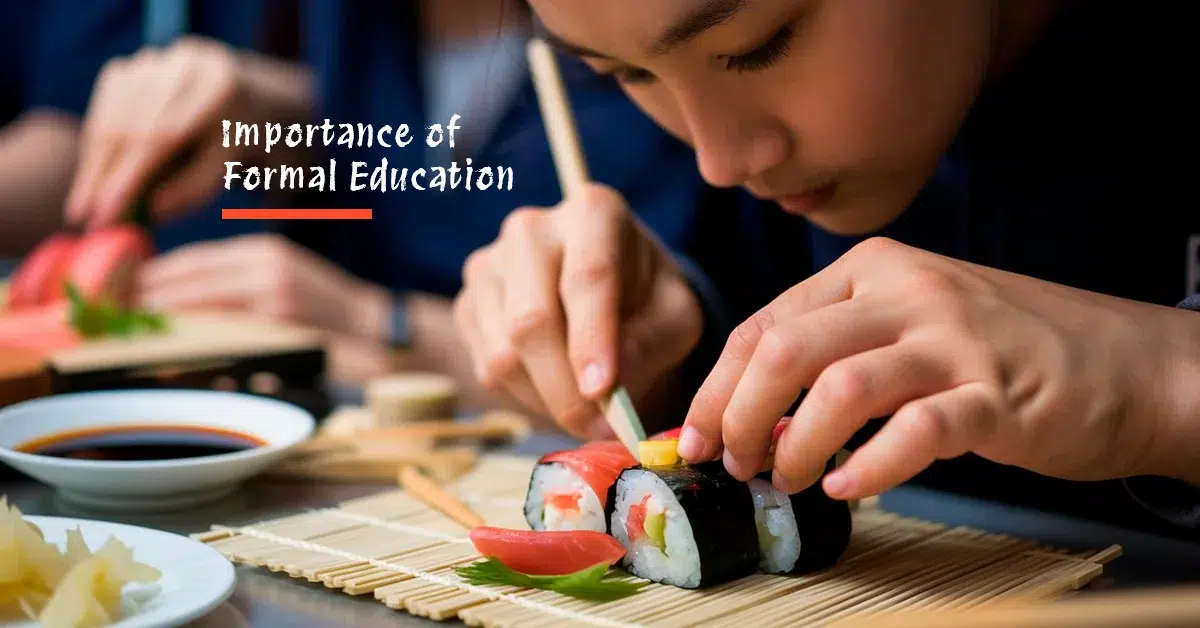
The Role of Japanese Culinary Schools in Branding and Marketing
Training and Certification
Importance of formal education
Embarking on a culinary journey requires more than just passion; it demands discipline and dedication. Formal education serves as the compass guiding aspiring chefs through the intricate flavours and techniques of Japanese cuisine. It’s a structured path that transforms raw talent into refined expertise, shaping culinary artisans ready to conquer the realm of culinary branding.
Notable culinary schools in Japan
In the land where cherry blossoms whisper tales of tradition, culinary schools stand as pillars of gastronomic excellence. From the historic halls of Tokyo Culinary Institute to the cutting-edge kitchens of Osaka Gastronomy Academy, these institutions nurture the next generation of culinary visionaries. Here, students not only learn recipes but unravel the stories woven within each dish, preparing to leave their mark on the world stage.
Influence on Brand Authenticity
Graduates as brand ambassadors
As graduates step into the limelight of Japan’s vibrant culinary scene, they become more than chefs; they become storytellers. Armed with skills honed by tradition and innovation, these culinary alchemists carry the torch of authenticity into the realm of culinary branding. Each dish they craft is a testament to their training, a symphony of flavours that resonates with diners and etches brands into memory.
Case studies of chef-led brands
In the ever-evolving landscape of Japanese cuisine, chef-led brands shine as beacons of authenticity and creativity. From Mizuki Sushi House‘s innovative sushi creations to Haru Ramen Bar‘s soul-warming bowls, these brands embody the essence of Japanese culinary tradition. Chefs turned entrepreneurs infuse their brands with personal flair and cultural reverence, creating experiences that transcend mere dining. They are not just restaurants; they are stages where culinary artistry meets brand storytelling.
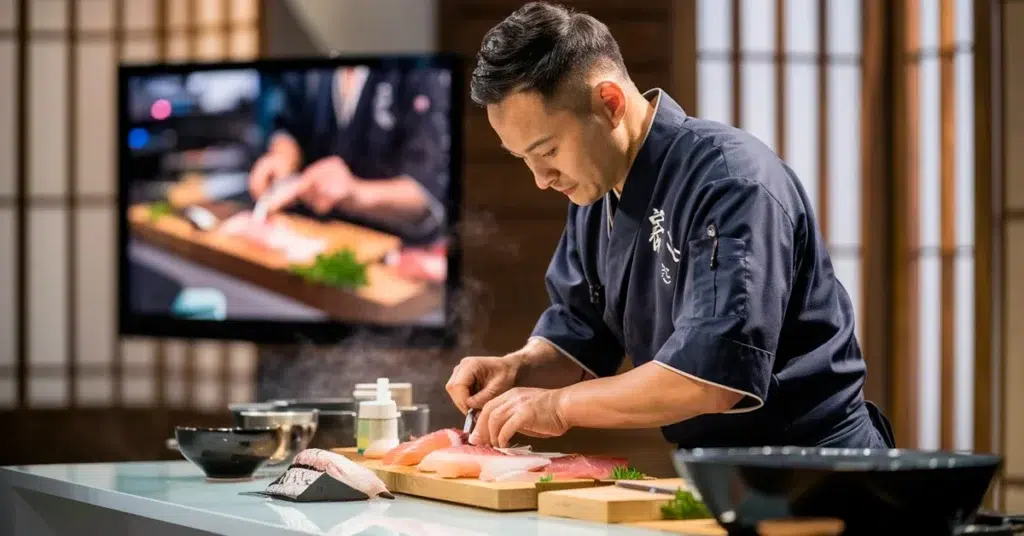
The Impact of Media on Japanese Culinary Food Branding Strategies
Television and Film
Popular cooking shows
In the realm of culinary entertainment, vibrant cooking shows sizzle on screens, whisking viewers into a flavorful frenzy. From sizzling grills to delicate knife skills, these shows serve up a feast for the eyes, celebrating the artistry of Japanese cuisine in all its savoury splendour.
Documentaries on Japanese cuisine
Documentaries unfurl like culinary scrolls, painting vivid portraits of Japan’s gastronomic tapestry. Through lens and narrative, viewers embark on epicurean journeys, tracing the roots of tradition and innovation that define Japanese culinary heritage.
Social Media and Influencers
Role of Instagram and YouTube
In the digital realm of pixels and posts, Instagram and YouTube emerge as culinary canvases where flavours dance in vibrant hues. From tantalising sushi rolls to steaming bowls of ramen, influencers curate visual feasts that tantalise taste buds and spark cravings with each scroll and click.
Influencer partnerships
Collaborations between brands and social media tastemakers bloom like sakura in spring, merging authenticity with influence to craft compelling narratives. As influencers share their gastronomic adventures with global audiences, brands find new avenues to connect with diners hungry for experiences that transcend borders.
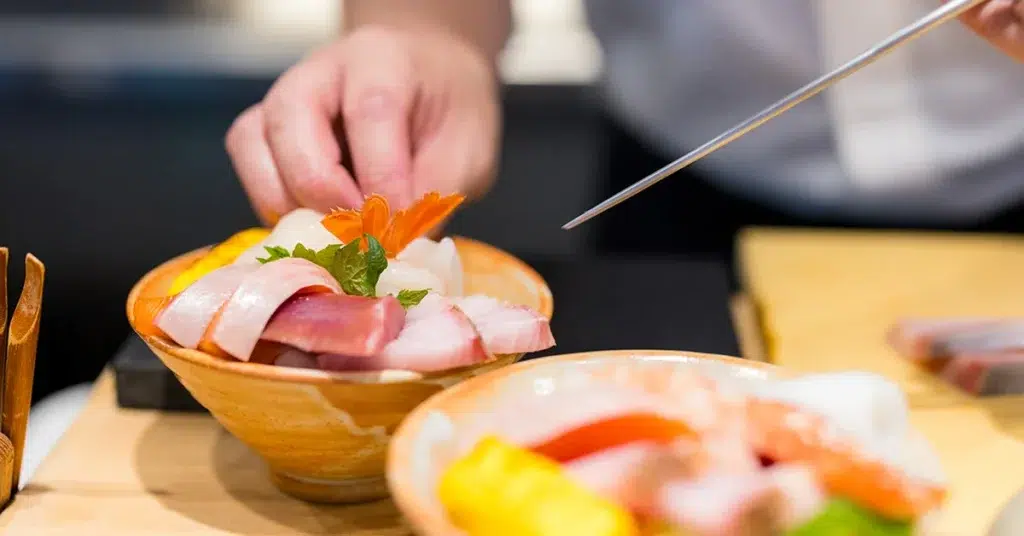
Challenges in Maintaining Authenticity and as Top Food Branding
Globalisation and Fusion
Balancing tradition and innovation
In the ever-evolving landscape of culinary branding, the delicate dance between tradition and innovation unfolds like a gastronomic waltz. Each dish becomes a canvas where flavours pirouette with creativity, harmonising heritage with contemporary flair. The challenge lies not in choosing between past and present but in orchestrating a symphony that resonates with diners across borders.
Case studies of successful adaptations
Across bustling kitchens and serene dining halls, tales of successful adaptations echo like whispers of culinary triumph. Brands that navigate the waters of globalisation with finesse become beacons of authenticity in a sea of fusion. From reinventing classic recipes to embracing local nuances, these brands showcase how tradition can thrive in the embrace of innovation.
Protecting Culinary Heritage
Efforts to preserve traditional recipes
Amidst the whirlwind of culinary trends, efforts to safeguard traditional recipes stand as pillars of gastronomic preservation. Like guardians of flavour, chefs and food enthusiasts rally to protect age-old techniques and time-honoured dishes from fading into obscurity. Each recipe becomes a thread woven into the tapestry of culinary heritage, cherished for its taste and treasured for its history.
Role of government and organisations
In the realm where flavours meet policy, governments and culinary organisations play pivotal roles in nurturing culinary heritage. Through initiatives that celebrate local cuisines and support artisanal producers, they cultivate an environment where traditions flourish. Their commitment ensures that each dish served is not just a meal but a legacy passed down through generations.

Future Trends in Japanese Culinary Branding
Sustainability and Ethical Sourcing
Importance of sustainable practices
In the realm of culinary branding, prioritising sustainability isn’t just a trend; it’s a commitment to nurturing the earth that feeds us. Embracing eco-conscious practices ensures that each dish served is a tribute to nature’s bounty, a harmonious dance of flavours that respects the delicate balance of our planet.
Examples of eco-friendly brands
Amidst the bustling kitchens and serene dining halls, GreenGastronomy emerges as a beacon of sustainability in Japanese culinary branding. From farm-to-table sourcing to zero-waste initiatives, GreenGastronomy weaves ethical practices into every culinary creation. Each dish tells a story of mindful sourcing and environmental stewardship, inviting diners to savour not just flavours but values on their plates.
Technological Innovations
Use of AI and robotics in cuisine
In the age where technology dances with tradition, AI and robotics step onto the culinary stage as innovative partners. From precision slicing to automated cooking processes, these technological marvels revolutionise how dishes are crafted. The marriage of human artistry with mechanical precision creates a symphony of efficiency and creativity that elevates the dining experience to new heights.
Impact on branding and customer experience
As AI algorithms hum alongside sizzling pans and robotic arms twirl with graceful precision, brands harness this technological ballet to enhance customer experiences. Personalised recommendations tailored to individual tastes and interactive dining experiences blend seamlessly with traditional hospitality. The fusion of cutting-edge technology with time-honoured traditions paints brands as pioneers in culinary innovation, captivating diners with a taste of tomorrow’s gastronomy.




